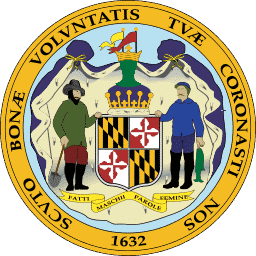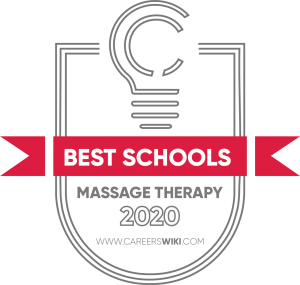…
There are more than a half-dozen massage therapy schools in Maryland, including those that specialize in MT and others with many career programs. The choices range from small private institutes to large public colleges.
Most schools offer certificates or diplomas that require less than one year to obtain. Some award associate degrees, which entail two years of study. Classes, labs, and clinical experiences make up the curricula.
There will be about 200 job openings for practitioners in the Old Line State each year through 2026, if a federal government forecast is accurate.
View massage schools in other states by clicking here.

This office, known as BOMTE, establishes licensure criteria and issues licenses to massage therapists and massage practitioners. It determines education and examination requirements.
The board approves massage therapy school programs, posting a list of institutions that meet curriculum standards. It also approves continuing education programs, and enforces license renewal and continuing education requirements for practitioners. Another responsibility is to conduct disciplinary investigations and hearings concerning alleged violations of laws or regulations.
The board is composed of seven volunteer members. Five of them must be licensed massage therapists with at least five years’ experience in Maryland. Two members are consumer representatives with no ties to the profession. The governor appoints the officials, with the advice of the secretary of the Health and Mental Hygiene Department.
The path to become a massage therapist in Maryland starts with a high school education or general education diploma. Postsecondary training must be at an accredited institute or college that offers an MT program satisfying board requirements.
Curricula need to feature a minimum of 600 contact hours of classroom instruction, including 100 hours of anatomy, pathology, physiology, and kinesiology; and 500 hours in massage therapy theory, technique, supervised practice, and professional ethics.
Beyond the basics, some programs have courses in a broader range of massage modalities. Others teach students how to set up their own massage businesses, or provide more extensive hands-on training in clinics.
There are two classifications of Maryland professionals. A licensed massage therapist must complete the 600 hours of education and 60 college credits, and pass the Massage and Bodywork Licensing Examination. A registered massage practitioner can work only outside healthcare settings. All license applicants have to pass a jurisprudence exam regarding state laws.
When applying for license renewals every two years, massage therapists must show evidence of having received 24 hours of continuing education. There need to be three hours in professional ethics or jurisprudence; three hours in communicable disease education (including AIDS/HIV); 17 hours in massage-related courses that the board has approved; and one hour in diversity or cultural competency.
We selected the schools below based on the programs that they offer, accreditation, student population, graduation rate and reputation.
View our Ranking Methodology to learn more about how we rank schools.

N/A
17
This private school in Baltimore offers an 810 contact hour certificate program that takes 11 or 17 months. Day, evening, and Sunday classes are available.
Students receive business training, as well as instruction in massage techniques such as Swedish, deep tissue, Shiatsu, prenatal, infant and children, geriatric, hot and cold stone, and Thai. There are also classes in acupressure, myofascial release, craniosacral therapy, reflexology, and chakra balancing.
Students are members of the American Massage Therapy Association. They receive employment assistance and attend job fairs. The percentage of graduates who pass the licensing exam far exceeds state and national averages.
74%
107
An extension of Columbia College in Virginia, this for-profit Silver Springs school awards massage therapy certificates. Students can complete the required 600 contact hours in as few as 30 weeks, though they may take up to 45 weeks.
In addition to the state-mandated coursework, there are classes in Medical Terminology, Business and Ethics, and Energetic Foundations. Students receive 100 hours of training in massage techniques, and take part in a 100-hour practicum at the end of the program.
The school serves its graduates with continuing education classes that the
National Certification Board for Therapeutic Massage & Bodywork has approved.
42%
359
Part of a privately owned network of medical institutes and colleges, this school offers a massage therapy certificate program three times per year. The curriculum, totaling 720 contact hours, involves 25 weeks of full-time daytime classes.
Along with the basic courses, students take Complementary Bodywork, Adaptive Massage, and Professional Career Development. They learn Swedish massage, sports massage, hydrotherapy, various body treatments, deep tissue massage, and neuromuscular therapy.
Sixty hours are spent in a student clinic, administering massages to the public. An externship at the conclusion of the program provides an additional 75 hours of practical experience.
79%
335
This company operates skin care and massage schools in five states, including a campus 17 miles south of Baltimore in Linthicum Heights.
The MT program, which the Commission on Massage Therapy Accreditation recognizes, totals 720 contact hours. It lasts 7.5 months, with day and evening class schedules (full or part time) available.
Courses teach Swedish massage, sports massage, athletic assessment and bodywork, reflexology, deep tissue massage, myofascial techniques, neuromuscular assessment and documentation, lymphatic and Russian sports massage, structural bodywork, injury techniques, trigger point therapy, and cranial sacral therapy. Students also attend classes in professional communications, business, and career development.
22%
2585
A public community college in Cumberland, ACM has two programs approved by the Commission on Massage Therapy Accreditation.
A one-year certificate curriculum trains students for jobs in wellness and spa settings. Thirty credit hours feature classes in manual lymph drainage, trigger point therapy, stretching techniques, medical terminology, and self care. Students also learn Swedish, deep tissue, and sports massage.
A two-year associate degree program is designed for those planning to work in medical offices. It covers the certificate curriculum, with 30 additional credit hours. There are math, English, psychology, and speech classes; as well as more clinical assignments.
11%
18830
About 25 miles east of Baltimore lies Essex, the site of this public school. CCBC’s associate in applied science program is certified by the Commission on Massage Therapy Accreditation.
Students may attend classes full or part time to fulfill the 60-credit requirement. Among the courses are Foundations of Communication, College Composition, Finite Mathematics and Modeling, Multicultural Psychology, Assessment and Self Care Skills, and Introduction to Business and Industry.
At a student clinic, real clients receive Swedish relaxation massages, as well as therapeutic treatments like deep tissue massage and myofascial release. Program admission is “competitive and selective”, according to the school.
29%
6882
This community college’s Hughesville campus is home to three MT programs.
Earning a therapeutic massage certificate involves 795 contact hours. Along with the required subjects, there are courses in Composition and Rhetoric, Therapeutic Massage, Clinical Application of Massage, and Client Assessment. Graduates can move on to a 542-hour advanced certificate curriculum, which includes Massage in Healthcare and Trends in Therapeutic Massage classes.
Students pursuing an associate in applied science degree take all those courses, plus General Psychology, FIrst Aid, three general education electives, and one professional elective. The 1,035-hour program takes two years to finish.
$18
$37,460
5%
Massage therapists here earn an average of about $37,460 yearly or $18 hourly, a little below the U.S. median of around $41,420 or $20.
Income among the top 10 percent is nearly $72,900 or approximately $35 in Maryland, compared to almost $78,300 or $37.65 across the country. Typical salaries and wages for those in the bottom 10 percent are around $20,440 and $9.85 in the state; about $21,340 and $10.25 nationally.
The state reported 2,770 practitioners in 2016. Federal labor officials projected that there would be 2,920 jobs 10 years later. If that proves true, it will be a modest 5 percent growth rate—much slower than anticipated national average of 26 percent.
Sources: U.S. Bureau of Labor Statistics, CareerOneStop

LIMITED TIME DEAL